Final Medicinal Botany – Flashcards
Unlock all answers in this set
Unlock answersquestion
Cinchona:Origin? Compound? Use?
answer
-South America -Quinine(alkaloid) -Blueprint for synthetic chemical Chloroquinine used in treating Malaria
question
Some of the main prescription drugs derived from plants
answer
Asprin Taxol Coumadin Vincristine Coartem
question
Origination of Asprin
answer
Willow Tree, Salix alba
question
Who used willow tree bark in the 18th centrury as treatment for fever and chills?
answer
Rev. Edmund Stone
question
Salicin's initial use before Asprin
answer
rheumatic fever, gout, rheumatoid arthritis, and osteoarthritis
question
Derivation of the name "Asprin"
answer
'a'- acetylsalicylic acid 'sprin'- spirea another plant source
question
What is salicylic acid still used for?
answer
topically for various skin ailments
question
What are Asprins 3 valued properties?
answer
Anti-inflammatory Antipyretic Analgesic
question
Taxol derivation
answer
1960s (pacitaxel) from Taxus brevifolia, Pacific Yew plant (gymnosperm/conifer)
question
Taxol's use
answer
anti-cancer/anti-tumor treatment for breast and ovarian cancers
question
Warfarin derivation
answer
(coumadin) from Melilotus spp, sweet clover
question
Warfarins chemical compound
answer
Coumarin Warfarin is synthesized from this to be more potent and longer-acting anticoagulant
question
Warfarin use
answer
Prevent blood clots Usually prescribed for people who suffered from a heart attack
question
Vincristine derivation
answer
1957 Catharanthus roseus, Rosy periwinkle from Madagascar
question
Chemical compounds extracted from Rosy periwinkle?
answer
Vincristine and vinblastine Extracted from the leaves
question
Vincristine use
answer
Childhood leukemia, Hodgkin's disease, lymphoma, breast cancer, sarcoma ; more.
question
Coartem derivation
answer
Atermisa annua, Chinese Artemisia (Wormwood)
question
Coartem use
answer
cerebral malaria
question
Coartem chemical compound and invention?
answer
Compoud: Artemisin
question
Artemisin
answer
Invented by Zhou Yiqing in 1980. Approved in US in 2009
question
Coartem's cure rate?
answer
95%
question
If its natural, is it safe to eat?
answer
No, Wild Garlic, Meadow saffron, curare, Desert tea, yellow jasmine
question
When a plant provides edible food, the entire plant is usually safe to consume?
answer
No. Elderberry, Mayapple, Opium
question
Phase 1
answer
trials in relatively few healthy people (<12) to determine the best dosage form and safe dose
question
Phase 2
answer
trials are done in a large number of patients to test the efficacy and to evaluate safety
question
Phase 3
answer
trials are done on a relatively large number of patients to test the new drug against their current standart treatment.
question
Quality control
answer
The procedure that ensures safety and efficancy of phytomedicines by carefully checking many different factors **Review These!!**
question
What parts of plants generally contain different active ingredients?
answer
Leaves, roots, bark, fruits, or seeds
question
Example of plants where one part is okay to use while other parts are toxic?
answer
Elderberry (fruits vs leaves)
question
Opium (Seeds vs latex)
answer
Opium seeds vs latex properties more than 20 chemical compounds accumulate in latex and give active ingredients such as morphine. Seeds give false positive used in cakes (safe to eat no chemical compounds)
question
So there is not confusion in the official medical plant documents what kind of system is used for naming the specific plant parts used?
answer
Latin names of pharmaceutical names of plants and plant parts
question
Devils claw:Scientific name? Meaning? Origin?
answer
Harpagophytum procumbens -Laying flat -Common name based on fruit shape -African Medicinal plant
question
Devils claw root: Name? Use?
answer
Harpagophyti radix - Dried, sliced roots are used to reduce lower back pain and inflammation -Europe commonly used for mild joint pain -Dr. Oz mentioned reduces pain and heals sprains
question
Devils claw root:Forms of medicine? Active compound?
answer
-Capsule or tonic -Harpagoside
question
Latin Pharmaceutical name:Stems
answer
Stip./ Stipes/ Stipites
question
Latin Pharmaceutical name:Root
answer
Rad./ Radix
question
Latin Pharmaceutical name:Rhizome
answer
Rhiz. / Rhizome
question
Latin Pharmaceutical name: Bulb
answer
bulbus
question
Latin Pharmaceutical name:Tuber
answer
tub. / tuber
question
Latin Pharmaceutical name:Bark
answer
Cort. / cortex
question
Latin Pharmaceutical name:Wood
answer
lig. / lignum
question
Latin Pharmaceutical name:Leaf
answer
fol. / folium
question
Latin Pharmaceutical name:Arial parts
answer
herba
question
Latin Pharmaceutical name:Flowers
answer
flos.
question
Latin Pharmaceutical name:Fruit
answer
fr. / fructus
question
Latin Pharmaceutical name:Seed
answer
sem. / semen
question
Latin Pharmaceutical name:Gum
answer
gummi (dissolves in H2O)
question
Latin Pharmaceutical name:Resins
answer
resina
question
Latin Pharmaceutical name:Fatty Oil
answer
oleum (found in seed/fruit parts)
question
Latin Pharmaceutical name:Essential Oil
answer
Aetheroleum (volatile oil, aromatherapy - organe peels)
question
Dosage Forms:Extracts
answer
crude mixtures of chemical compounds
question
Dosage Forms:Mixtures
answer
made from 2 ore more plants that dont contradict eachother
question
Dosage Forms:Teas
answer
dried infusions in boiling water
question
Dosage Forms:Tincture
answer
Alcoholic solution (some compounds dissolve better in Alcohol than in H2O)
question
Dosage Forms:Medicinal oils
answer
Fatty oils or waxes mixed with medicinal extracts; external/internal use ex. Sesame oil
question
Dosage Forms:Granules
answer
Made by binding powders or powdered extracts
question
Dosage Forms:Capsules
answer
Small containers with medicinal products(to keep from being dissolved right away) veap=plant product capsules
question
Dosage Forms:Tablets
answer
compressed powdered material uncoated
question
Dosage Forms:Pills
answer
semisolid preparations in small proportions
question
Dosage Forms:Lozenges
answer
tablet-like (intended for chewing- anything for throat and treatment of thrush) ex. ginger and echinacea
question
Dosage Forms:Suppositories
answer
intended for inserting (rare for herbal products) Ex. Castor bean oil is used to make suppositories
question
Dosage Forms: Ointments
answer
semisolid preparations meant for external application Ex. Periwinkle
question
If a plant is okay to take in one dosage form is it okay to take it as a tincture? Why?
answer
No Ex. if it can be taken as tea, it could be unsuitable as tincture. Ethanol may dissolve toxic substances or form toxic substances.
question
Why is it safe to eat an animal killed by curare poison?
answer
Because it is only toxic by injection not by digestions
question
Types of administrations into the body
answer
Oral-infusion, decotions, syrups Nasal- powder, suspenions Topical-lotions oils, creams, Rectal liquid preparations
question
Are crude herbal drugs used for serious health conditions?
answer
No.
question
Whar are phytomedicines usually administered for?
answer
For short periods of time to ease symptoms or shorten recovery time.
question
Sometimes for supportive treatment of chronic conditions
answer
Ex. poor blood circulation, mild depression and some diabetes -St. Johns Wart is an example of this
question
Top selling botanicals as of 2001
answer
Ginkgo, Ginseng, Garlic, Echinacea, St. Johns Wart, Saw Palmetto, Soy, Kava, Valerian
question
Top selling botanicals of of 2011
answer
Ginkgo, Ginseng, Garlic, Echinacea, St. Johns Wart, Saw Palmetto, Soy, Cranberry, Milk thisle, Black Cohosh
question
Who oriented assemensts/clinical trials of the populare botanicals of 2001 and published them?
answer
Ernest, E in 2002 published in the Annals of Internal Medicine
question
Ginkgo Biloba: Common name and traditional use
answer
Maiden hair tree
question
How is Ginkgo Biloba used?
answer
Used in China to strengthen hearth and lungs
question
Ginkgo Biloba: Plant Description
answer
A gymnosperm so old considered a living fossil. Seed has fleshy coat and looks like a silver apricot.
question
Ginkgo Biloba: Source and Name of Chemical Compounds
answer
Source: Leaves- Flavonoids, terpenes
question
Ginkgo Biloba: Modern Use
answer
treats dementia and related memory impairments, sleep disorders and dizziness
question
Ginkgo Biloba: Clinical trails
answer
Prove its efficacy in delaying dementia.
question
Adverse effects
answer
are mild & reversible (may interact with anticoagulants)
question
Ginseng: Scientific name
answer
Panax ginseng (Asian ginseng)
question
P. quinquefolius
answer
(America ginseng)
question
Ginseng: Plant Description
answer
-Leaves look like palmately compound leaf -Roots look like man laying down -can only harvest in 6th year
question
Ginseng: Traditional use
answer
China, Europe and North America- improve stamina, concentration as diuretic, antidepresant and aphrodisiac
question
Ginseng: Source and names of active chemicals
answer
Dried roots- triterpenoid saponins and sterols
question
Ginseng: Clinical trials
answer
Give mixed results- enhances mood and improve stamina
question
Not many incidence of serious side effects but may cause
answer
-may be insomnia, diarrhea, schizophrenia, headache -decrease effect of warfarin -avoid using with other stimulants
question
Garlic: Scientific name*
answer
Allium sativum (sati= cultivated)
question
Garlic: Traditional use*
answer
TEM(Europe) and TIM(Indian) used for antibacterial and lipir-lowering activities
question
Garlic: Source and name of chemical compound*
answer
Bulb- rich in sulfur-containing compounds Alliin -Alliin is converted to Allicin when crushed and exposed to air
question
Garlic: Modern Use*
answer
reduces cholesterol lives
question
Garlic: Clinical trials*
answer
effect is modest, lowers serum triglycerides not LDL cholesterol.
question
No adverse effects (Except odor)
answer
-Avoid w/ Warfarin -Maybe effective in large quantities
question
Purple Cone Flower: Scientific name
answer
Echinacea (pointed/prickly in center brown portion) purpurea (purple)
question
Purple Cone Flower: Origin
answer
North America
question
Purple Cone Flower: Source and active compounds
answer
Fresh plant/root juice -Polysaccharides
question
Purple Cone Flower: Use
answer
Upper respiratory tract and urinary infections. Immune stimulant and antimicrobial and anti-inflammatory effects.
question
Purple Cone Flower: Clinical trial
answer
prevents colds by 58% and reducing the duration of upper respiratory tract infections. -Entire plant extract as antidepressant -Flower oil: wound healing/body pain
question
Purple Cone Flower Rare adverse effects-
answer
allergic reactions
question
St. John's Wort: Scientific Name and Meaning
answer
Hypericum perforatum -little holes/oily glands in leaves that have essential oils
question
St. John's Wort: Traditional Use and Origin
answer
Used originally in Europe as liver remedry including jaundice, or as a detoxifier. Also later found in Asia and North America.
question
St. John's Wort: Active ingredient
answer
Phenolic compounds, terpenoids, hypericin (antiviral), hyperforin
question
St. John's Wort: Clinical trials
answer
Effective/Superior to conventional antidepressants -Excellent safety profile, potential serious symptoms: manic and infrequent photosensitization. -Avoid when taking prescription drugs
question
Saw Palmetto: Scientific name and meaning
answer
Serenoa repens- creeping(on ground)
question
Saw Palmetto: Origin and plant description
answer
From South Eastern U.S - A prostrate plant, with fan-shaped leaves
question
Saw Palmetto: Use
answer
Dry fruit solvent extract used to treat benign prostate hyperplasia (frequent uriniation and inflammation)
question
Saw Palmetto: Clinical Trials
answer
Efficiency compared to synthetic Well tolerated with rare/mild side effects
question
Saw Palmetto: Active ingredients
answer
Fatty acids and phytosterols
question
Kava: Scientific Name and meaning
answer
Piper methysticum(intoxicationg)
question
Kava: Origin
answer
Known in TAUM(Australian) and Polynesia
question
Kava: Plant parts
answer
Rhizome and roots are ground into a beverage. Traditionally women of the tribe chewed it to ground it up and mix w/ saliva to make the beverage
question
Kava: Use and Active ingredients
answer
-Drank to treat anxiety and disturbed sleep -Kavalactones, kavapyrones
question
Kava: Clinical Trials
answer
Effective in short term use -Serious side effect are rare- toxic liver damage -Long term use at high dose- flaky, dry, yellowing of skin, hair loss, hearing loss, and weight loss
question
Cranberry: Scientific Name
answer
Vaccinium sp
question
Cranberry: Active ingredients
answer
Antioxidants (anthocyanin)
question
Cranberry: Use
answer
-Treats UTIs (effective but not 100% of the time) -Improves cardiovascular health -Avoid taking with anticoagulants
question
Milky Thistle: Scientific name
answer
Silybum marianum related to echinacea
question
Milky Thistle: Plant part and Use
answer
Dry fruits (achenes) -used for liver health
question
Milky Thistle: Clinical Trials
answer
Lack of Rigorous clinical trials -no severe side effects reported
question
Black Cohosh: Scientific name
answer
Cimicifuga racemosa
question
Black Cohosh: Plant part and use
answer
Dried rhizomes and roots -to treat menopausal symptoms/hot flashes (combine w/ st. johns wort)
question
Black Cohosh: Clinical Trials
answer
No side effects except mild GI upset -Higher doses (>160 mg/day) may cause nausea & vertigo
question
Soy: Scientific name
answer
Glycine max
question
Soy: Plant part and active ingredients
answer
- Seeds - phytoestrogens: isoflavens
question
Soy: Use
answer
taken by menopausal women
question
Soy: Clinical Trials
answer
2006 study proves effect is small but positive -not intended for small children -may cause allergy
question
What is DSHEA?
answer
-dietary supplements and health education act -1994 signed by clinton
question
Difference between FDA and DSHEA?
answer
FDA regulates dietary supplements under a different set of regulations through DSHEA. And DSHEA guides manufacture of dietary supplements by a set of definitions, stipulations and respondibilites
question
What are the guide-lines of manufacturing Dietary supplements?
answer
-safe before marketing -label must be true -Register: facility, product and approval
question
Phytochemicals
answer
plant-derived chemicals (usually used for plants own protection)
question
Phytomedicines
answer
aka phytopharmaceuticals -the phytochemicals that help in preventing health disorders and/or in maintaining health in human body
question
What are the two major categories of phytochemicals?
answer
Primary and Secondary metabolites
question
Primary metabolites: definition and examples
answer
Something part of that living organism. NO adaptive significance to the plant. Ex. Sugars, Amino Acids, Fatty Acids
question
Secondary Metabolites: Definition and examples
answer
Natural products formed by secondary metabolic pathways. Ex. alkaloids, sterols, tannins and phenols
question
Secondary Metabolites: Use to plant
answer
Were considered "waste products" but are actually defensive agents and help plants survive.
question
Which Metabolite is generally the active compount?
answer
Secondary metabolites
question
What can cause the chemical profile of a plant to vary?
answer
could be different depending on genus(ex. american vs asian ginseng), between part of the plant, development period, or different plants of 1 population
question
How many secondary metabolites have been identified?
answer
14,000
question
What two groups are secondary metabolites divided into?
answer
Nitrogen- containing and non-nitrogen containing
question
Nitrogen Containing substances
answer
alkaloids, Non-protein amino acids, cyanogenic glycosides, glucosinolates, and a few more
question
Largest class of secondary metabolite substances?
answer
Alkaloids "Alkali-like substances"
question
Alkaloid: description
answer
-Crystalline or liquid form -colorless, brown, or yellow -most names end in "-ine" -most are toxic at high concentrations
question
What percent of plants contain alkaloids as active compound?
answer
15%
question
What plant families have more alkaloid containing taxa than most?
answer
Colchicacea- Meadow saffron(poisonous)
question
Apocyanaceae-
answer
Rosy Periwinkle(leukemia)
question
Rubiaceae-
answer
Cinchona(malaria)
question
Solanaceae-
answer
Tobacco
question
Alkaloids: Analgesica and Narcotics
answer
Morphine and Codine
question
Alkaloids: Central stimulants
answer
stychnine and brucine
question
Alkaloids: Local anesthetics
answer
cocaine
question
Alkaloids: Antispasmodics
answer
Atropine and hyoscyamine
question
Alkaloids: Antihypertensives
answer
reserpine
question
Alkaloids: Muscle paralyzers
answer
tubocurarine
question
Alkaloids: Anti-tumor agents
answer
camptothecine
question
Morphine and Codine: Plant Names, Origin
answer
-Opium poppy "joy plant" -Papaver somniferum(sleep bearing) - Native to SE. Europe and W. Asia
question
Morphine and Codine: Plant part and description
answer
Coagulated latex from ripened capsules- "Crude opium" -contains other 23 alkaloids including papaverine -Seeds give false positive but do not contain active compounds
question
Morphine: Use
answer
Pain reliever and hypnotic
question
Who is F.W. Serturner
answer
In 1805, first person to separate morphine extract and named it morphine after Morpheus(God of dreams)
question
Codine: Use
answer
Mild sedative and cough suppressant
question
Morphine and Codine: Narcotic
answer
Classified as depressant narcotics -"Opiates" synthetic drug derived from opium
question
Strychnine and Brucine: Origin, Scientific name and meaning
answer
-South Asia -Nux Vomica (induced vomit) Strychnos nux-vomica
question
Strychnine and Brucine: Plant parts
answer
Seeds used in homeopathy -contain Strychnine and Brucine both extremely toxic - Bark juice reduces fever
question
Strychnine: Use
answer
Important in physiological and neuroanatomical research. increases appetite and digestion so used as tonic in <20mg/day
question
Brucine: Use
answer
Alcohol denaturant
question
Strychnine and Brucine: Strychnos Toxifera
answer
Plant found in S. America in same genus containing toxiferine (used in curare poison) -useful in surgery to prevent muscle contraction
question
Cocaine: Scientific name Origin
answer
Coca plant
question
Erythroxylum coca
answer
-Q'oka, an aztec word meaning for for travelers/workers South American Shrub
question
Cocaine: Plant part and other compounds
answer
Cocae folium(leaves) -contain 14 diff alkaloids: nicotine and propane alkaloids
question
Cocaine: History and Use
answer
Albert Neimann extracted cocain in 1860s -S. American local anesthetic and euphoric -Australia local anesthetic for mouth and lung ulcers (up to 1916) -Replaced in Western Medicine by synthetic local anesthetics benzocaine and anbezol(derived from cocaine)
question
Atropine and Hyoscyanine: Scientific name and origin
answer
Deathly nightshade Atropa (inflexible) belladonna (beautiful lady) -Europe and Asia
question
Atropine and Hyoscyanine: Plant part and alkaloids
answer
Leaves and Roots -"belladona alkaloids" -tropane alkaloid (tropane shares chemical structure and similar reaction)
question
Atropine: Use
answer
Modern med in ophthalmology (pupil dialator) -treat bradycardia (slow hr) and hyperhydrodosis
question
Hyoscyamine: Use
answer
treats disorders of GI tract ; reducing symptoms of parkinson's
question
Atropine and Hyoscyanine: dosage
answer
Low dose- sedative High dose- hallucinations, insomnia and death
question
Atropine and Hyoscyanine: Other family members containing tropane alkaloids
answer
Solanaceae- jimson weed and angels trumpet
question
Reserpine: Origin, Scientific Name and meaning
answer
India indian snakeroot Sarpagantha(snake like) Rauwolfia serpentia(shape of root)
question
Reserpine: Plant part and other species
answer
Root R. vomitoria (African species) and R. tetraphylla (Indian species)
question
Reserpine: Traditional Use
answer
Anti-hypertensive properties(Gandhi drank as tea to calm down) -Cure Moon disease (schizophrenia)
question
Reserpine: Modern Use
answer
Powder form is treatment for mild hypertension, blood pressure and mental disorders -Root decoction induces uterine contractions
question
Tubocorine: Origin, Scientific Name, meaning
answer
South America curare plant Chondrodendron (cartilage) tomentosum(spices)
question
Tubocorine: Plan source and use
answer
Tree bark used as anesthesia provide skeletal muscle relaxation during surgery -Crude extract has paralyzing effect -Reverses strychnine poisoning
question
Dr. Michael B.
answer
Expert in curare, accidently poisoned himself with a coated arrow
question
Campothecine: Origin, Scientific Name and meaning
answer
China Happy Tree/Cancer Tree Camptotheca acuminata (the shape of the pointed leaf tip)
question
Campothecine: Plant part and history
answer
Bark and leaves
question
who discovered Campothecine
answer
Discovered in 1966 by Drs. Wall and Wani
question
Campothecine: Use
answer
-breast, prostate, pancrease, ovarian, leukemia and lymphoma cancers - malignant melanoma -synthetic variants are also developed
question
Non-protein amino acids
answer
Garlic(allium sativum) and Onion(allium cepa)
question
Onion: Use
answer
-ophthalmia, ear ache, and jaundice (middle east) -hypoglycemic agent -raw red onion prevents arteriosclerosis(thickening of arteries)
question
Cyanogenic glycosides: Description
answer
-a sugar molecule attached to a non-sugar active compound(aglycone) -inert until mixed with water or enzyme
question
Cyanogenic glycosides: Source
answer
-Milky latex of cassava roots -Pits of stone fruits (cherries plums aricots almonds i.e. drupes)
question
Amygdalin
answer
laetrile/Vitamin B17 -cancer treatment
question
Cyanogenic glycosides
answer
-Linamarin and lotaustralin -Glucosinolates -Amygdalin
question
Linamarin and Lotaustralin: scientific name and meaning
answer
Found in bitter and sweet Cassava (yuca) Manihot(manroot) esculenta(edible)
question
Linamarin and Lotaustralin: Use
answer
Hydrogen syanide released from roots is used in the treatment of scabies
question
Glucosinolates: Source
answer
-Sinigrin, bitter pungent compound found in horseradish tap roots (related to mustard)
question
Glucosinolates: use
answer
Spamolytic effects (release pain and relax mucles)
question
Non-nitrogen containing substances
answer
Terpenes, saponins, steroids (cardiac glycosides/steroidal saponin), Phenolics, Tannins
question
Terpenes: Plant side effects
answer
Some cause rashes: Pencil cactus latex Some are toxic: water hemlock
question
Terpenes: Use
answer
Analgesic, antirheumatic, volatile oils, anti-tumor
question
Terpenes: Devils Claw
answer
Harpagosides -anti-inflammatory -reduced arthritis
question
Terpenes: Anti-tumor
answer
Paclitaxel (toxic compound)
question
Terpenes: Volatile oils
answer
Artemisinin -Chinese wormwood
question
Saponins
answer
Ginsenosides -soap-like property -Ginseng, Panax spp. -Improve stamina, concentration, as diuretic, antidepressant and aphrodisiav -fresh or dry fruit
question
Steroids: two types
answer
Cardiac glycosides and steroidal saponin
question
Cardiac glycosides: part of plant and compound
answer
Leaves and seeds contain cardiac stimulants: digitoxigenin, digitoxin
question
Cardiac glycosides: plant, Origin, scientific name
answer
Foxglove Mediterranean and Europe Digitalis purpurea -snapdragon relative
question
Cardiac glycosides: Use
answer
Since 1785 to treat dropsy (heart attack symptoms) and currently used for mild to moderate heart failure
question
William Withering
answer
Doctor that observed application of Digitoxin from lady in the mountains treating villagers dropsy
question
Steroidal saponin: Copmound and plant part
answer
Diosgenin- can be synthesized into steroidal hormones and birth control corms or rhizomes(modified stems **Exception** Fenugreek seeds/leaves
question
Steroidal saponin: Sources, scientific names
answer
Wild yams- Dioscorea villosa Fenugreek-Trigonella foenum-graecum
question
Phenolics: Glycosides
answer
salicylic acid, flavanoids, curcuminoids, coumarins
question
Phenolics: Salicylic acid
answer
from white willow and many other plants -salicin
question
Phenolics: Flavonoids
answer
>4,000 flavonoids have been identified many of which occur in fruits, vegetables and beverages. -Many beneficial biochemical and antioxidant effects Ex. Black Elderberry
question
Phenolics: Curcuminoids- Plant Origin and scientific name
answer
Curcuma(turmeric) Curcuma longa India
question
Phenolics: Curcuminoids- Use
answer
Fresh/dried rhizomes (curry powder) -antitumor, anti-inflammatory, anti-microbial, anti-oxidant, also cosmetic use (soften skin)
question
Phenolics: Coumarins- Plant
answer
Leaves of sweet clover Mellitus officinalis
question
Phenolics: Coumarins- Use
answer
Anticoagulant (warfarin) -wound healing
question
Tannins: Plants
answer
-Polyphenols w/ astringent taste -Witch Hazel: Hamamelis virginiana -Oaks, chestnuts, pomegranates
question
Tannins: Use
answer
Fungicidal: use in leather Antiviral, antibacterial, and antiparasitic
question
Primary metabolites
answer
carbohydrates, proteins, lipids
question
Carbohydrates
answer
Sugar alcohols, Sugar acids, Dietary fibers, gums & mucilages
question
Sugar alcohols
answer
Carbohydrates ex. Rosaceae fruits- sorbitol (low sugar option)
question
Sugar Acids
answer
Carbohydrates Ex. Vitamin C (L-ascorbic acid) in citrus fruits and strawberry
question
Dietary fibers
answer
Carbohydrates Ex. Insoluble and soluble fibers in the form of cellulose, pectin and lignin
question
Gums & Mucilages
answer
Carbohydrates Ex. Psyllium as laxative Okra mucilae as plasma replacement or blood volume expander
question
Amino Acids and Proteins
answer
Abrin and Ricin, Glutathione, Folic acid
question
What will deficiency of essential amino acids cause?
answer
Malnutrition
question
Abrin and Ricin
answer
Glycoproteins Studied for anti-cancer
question
Glutathione
answer
Antioxidant/detox Immune system enhancer
question
Folic acid
answer
Vitamin B9 in many green veggies
question
Rosary pea
answer
Abrus precatorius -Contains Abrin= very poisonous -Seeds look like ladybug/candy
question
Castor Bean
answer
Ricinus communis -Contains Ricin in the leaves= less than 1mg can kill an adult -same family as cassava
question
Lipids: General Health
answer
Essential(Flax/hemp), Saturated(coconut), Unsaturated(olive) fatty acids
question
Lipids: Medicine
answer
Primrose oil, Ricinoleic acid, Chaulmoorgric acid
question
Primrose oil
answer
Lipid -Evening primrose: Oenothera biennis -treatment for PMS (yellow flower) -EFAs from the seeds
question
Ricinoleic acid
answer
Lipid Castor oil Purgative
question
Chaulmoogric acid
answer
Lipid -Treats leprosy(micrococcus infection loss of sensitivity and deformation) -Chaulmoogra: Hydnocarpus wightiana -Joseph Craft
question
How did traditional medicine probably first evolve?
answer
Trial and error
question
Since ancient people did not have much insight on Science what did they depend on for Cures and answers ?
answer
witchcraft and superstition
question
What is another term for Traditional Medicine?
answer
Herbalism
question
What is another term for Conventional Medicine?
answer
Allopathy
question
Doctrine of Signatures 15th century
answer
The idea that each medicinal plant had a sign or symbol that told what it should be used to treat. Ex. Walnut Looks like a brain so it was used to treat head injuries
question
what was the name of the era when herbal medicine first Came about
answer
The great age of herbal
question
Paracelsus
answer
a Swiss /German botanist and physician who believed he knew everything especially about plant signs and wrote a book on Surgery and "Doctrine of Signatures" -emphasized importance on correct dosage
question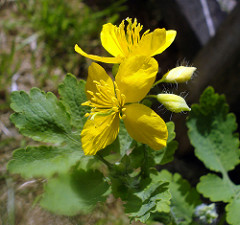
Paraclesus: Chelidonium majus

answer
-yellow latex has successfully cured jaundice -yellow flower assumed to treat yellowing of skin he was right with this plant
question
How does herbalism work?
answer
The chemical compounds inside a medicinal plant may act individually, additively, or in synergy to improve health.
question
Can a plant have more than one healing property?
answer
Yes, like Ginseng: stimulates digestion, reduces swelling and pain, and also acts as an antibacterial and diuretic because of a variety of chemical compounds present in it.
question
How is herbal medicine maximized?
answer
By using a chemically compound plant or by mixing several different plants traditional herbal medicine tries to maximize a synergistic effect.
question
How do different herbalism practices differ?
answer
By the region in which they are practiced in i.e: western, Chinese (Japanese Korean) or Ayurvedic (Indian)
question
Herbalism: compared to allopathy?
answer
Aims to reduce symptoms, maintain health, to improve quality of life in a cost effective way, restores balance, varies from region to region.
question
Allopathy: compared to herbalism?
answer
-Aims to develop a patentable single compound ("magic bullet") to treat specific conditions (serious and acute conditions), has its roots in herbalism but incorporates knowledge from ethnomedicine.
question
African and Middle Eastern traditional medicine
answer
The oldest and perhaps the most diverse of all medicine systems.
question
What style is the African TM?
answer
Holistic involving mind and body. Medicines are prescribed after finding out the psychological basics for an illness.
question
Materia Medica
answer
Plant Sources used for healing
question
Materia Medica of Southern Africa
answer
general tonics, sedatives, diuretics, laxatives, stomachics, and numerous wound-healing plants
question
List of African Medicinal plants
answer
Aloe vera, African Wormwood, Khat, Rosy periwinkle, Devils claw, African Cherry, African snakeroot, Kombe
question
Artemisia afra
answer
African Wormwood - Africa
question
Catha edulis- roseus
answer
Rosy periwinkle - Africa/Madigscar
question
Harpagophytum procumbens
answer
Devil's Claw- Africa
question
Prunus adricana
answer
African Cherry (BPH like Saw Palm. Almost extinct)
question
Rauwolfia vomitoria
answer
African snakeroot
question
Aloe vera: known as
answer
Cleopatra's plant - Africa -now used to radiation burns. -The burn plant/medicine plant
question
Aloe vera: plant part
answer
Succulent leaves (juice and gel)
question
Aloe vera: Juice
answer
Latex- contains a glycoside, aloin. Used as a laxative.
question
Aloe vera: Gel
answer
Tissue area- contains saponins, sterols and salicylic acid for treating burns. - works as a cleanser and antiseptic, anti-inflammatory, reduce pain.
question
What plant did Alexander the Great conquer lands for?
answer
Aloe Vera
question
Catha edulis: Known As and Found where?
answer
Khat tree (non-flowering) -S & E Africa to Afghanistan
question
Catha edulis: Plant part
answer
-Leaves with reddish tips. -Chewed with lime (calcium hydroxide)
question
Catha edulis: Chemical compounds
answer
- Cathine, and Cathinone - CNS Stimulant
question
Catha edulis: Use
answer
Stimulants, antidepressants, and social behavior
question
Catha edulis: Symptoms
answer
Long term use: constipation, decreased appetite, irritability and low sexual drive.
question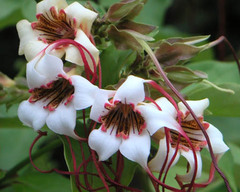
Strophanthus spp: Known as and where?

answer
-Kombe -Gratus: Strophantus
question
Strophanthus spp:Origin
answer
-S, E, & W Africa
question
Strophanthus spp: plant part and family
answer
- Seeds - Oleander family
question
Strophanthus spp: Use
answer
-Toxic- Arrow poisons in Africa -cortisol precursor Gratus-As a cardiotonic agent (similar to digoxin and digitoxin)
question
Strophanthus spp: Chemical compounds
answer
Cardiac glycosides -Ouabain (gratus) -Strophanthin -Sarmentogenin (cortisol precursor)
question
What was used as a cortisone precursor before Strophanthin?
answer
ox bile make from 40 Ox to treat 1 human. -Strophanthus seeds are 17 chemical steps closer to cortisone than Ox bile.
question
Who discovered Strophanthus?
answer
William Laurance- a science writer who won a Pulitzer Prize (1947) -discovered while climbing a tree
question
The Middle East: What is it known as?
answer
The cradle of civilization
question
Where did modern crops first originate from?
answer
The Middle East
question
Where did Assyrians, Babylonians, and Sumerians record herbal remedies?
answer
Clay tablets dated 2000-4000 BC.
question
Oldest known prescription pads?
answer
Sumarian Clay tablets
question
What plant was commonly found in wall paintings in Egyptian Tombs?
answer
Opium poppy capsules (2700-2200 bc)
question
The Code of Hammurabi
answer
Lists several hundred medicinal herbs in a series of several hundred clay tablets carved under the direction of the King of Babylon
question
What ancient record states "eye for an eye, tooth for a tooth"
answer
The Code of Hammurabi
question
What are some of the main herbs mentioned in The Code of Hammurabi that are still used today?
answer
Henbane, licorice and mint
question
Two other forms of ancient medical records?
answer
Bible and Ebers papyrus (both 1500 bc)
question
Ebers papyrus
answer
a 10m papyrus scroll that lists >700 medicinal recipes based on plants, containing plant substances, and are now known to have therapeutic value.
question
Plants mentioned in Ebers papyrus that are still therapeutic today?
answer
Pomegranate, Cannabism aloe, castor, and mandrake (atropa belladonna fam.)
question
Who were the gurus of herbalism in the Middle East?
answer
Hippocrates, Dioscorides, and Avicenna.
question
Who wrote Canon Medicine?
answer
Avicenna (AD 980-1037) included elements of other healing cultures
question
What was Canon Medicine the basis for?
answer
Distinct Islamic healing system known as Unani-Tibb ="Greek" "Medicine" in Arabic
question
Some important Middle Eastern Medicinal plants are?
answer
Onion, Safflower, Asafoetida, Opium Poppy, Pomegranate, Castor bean, Fenugreek, Grape
question
Allium cepa
answer
Onion - Middle East
question
Carthamus tinctorius
answer
Safflower- Middle East -Source of dye
question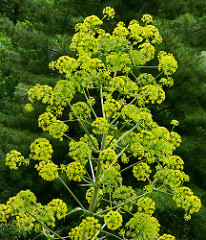
Ferula assa-foetida:common name and origin

answer
Asafoetida/Devils Dung - Iran and Asian deserts
question
Ferula assa-foetida: Chemical Compound
answer
Oleoresin (essential oil) gums from roots -Contains Terpenes and colatile oils rich in sulfur compounds
question
Ferula assa-foetida: Use
answer
Flatulence, dyspepsia, and bronchitis - Add this before cooking beans or other foods to remove after effects or taste
question
Punica granatum:common name and origin
answer
Pomegranate - SE Europe / Mediterranean
question
Punica granatum: Plant part
answer
Fruit rind (pericarp, white skin around seeds) or tree bark
question
Punica granatum: Chemical compound
answer
Tannins (pericarp) and alkaloids (bark)
question
Punica granatum: Treats
answer
Tannins: antidiarrheal effect Alkaloids: act against intestinal parasitic worms, also toxic (when dosage is exceeded)
question
Punica granatum: history
answer
-mentioned in Judaism and many Pharmacopeia -Considered an ancient fruit
question
North American Healers
answer
Shamans- indigenous healers that approaches illness by addressing both the physical and spiritual dimensions of disease.
question
What are Shamanistic ceremonies like?
answer
Involved chanting, dancing and other rituals aimed at expelling evil forces.
question
Where did early pioneers of North America adopt their medical system from?
answer
Shaman herbal remedies, which later formed the basis of the Pharmacopoeia.
question
Father of American Herbalism
answer
Samuel Thompson (1794 - 1868) he contributed to the preservation of american medicine, chill pepper, and Indian tobacco, believed plants could cured any illness of body. He experimented on himself.
question
North American Herbalism in the 20th Century and Now
answer
-"Botanicals" were viewed with skepticism and their uses went into decline. -Now increasing popularity but are still viewed by many as nutritional supplements rather than medicines.
question
American medicinal plants
answer
Cayenne pepper, Indian tobacco, Purple cone flower, Goldenseal, Goldenseal
question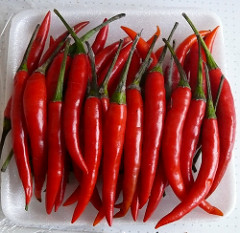
Capsicum frutescens: common name and origin

answer
Cayenne pepper aka Chili pepper -Tropical America
question
Capsicum frutescens: Plant part
answer
Fruits and seeds
question
Capsicum frutescens: Chemical Compound
answer
Capsaicin. Can be artificially sythesized
question
Capsicum frutescens: Uses
answer
-Topically: Arthritis, rheumatism, spasms, itching -Internally: for dyspepsia, colic, flatulence etc - antibacterial (not soluble in water)
question
What plant is the basis for chemicals used in icy-hot and zostrix?
answer
Chili pepper
question
Lobelia inflata: common name and origin
answer
Indian tobacco aka Puke weed - North America -Native American, flowering/inflated lobelia
question
Lobelia inflata: plant part
answer
Stems and leaves are used
question
Lobelia inflata: Use
answer
Treatment of asthma, bronchitis and pertussis(whooping cough) -As a bronchodilator
question
Lobelia inflata: Chemical Compound
answer
Lobeline- tropane alkaloid, could be toxic or cause hallucination -used in oral anti-smoking until 1993
question
Lobelia inflata: Other species use
answer
variously as diuretic, syphilis cute and as narcotic
question
Echinacea purpurea
answer
Purple cone flower - North and West America
question
Hydrastis canadensis
answer
Goldenseal - North America
question
West American healing style
answer
Directed at specific problems or diseases. -whole plant extracts were usually used -Use of Herbal remedies has soared since 1990
question
West American medicinal plants
answer
Bilberry, Evening primrose, Saw palmetto, Purple Cone flower, St. John's wort
question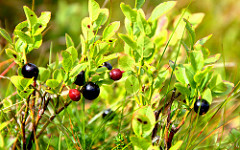
Vaccinium myrtillus:common name and origin

answer
Bilberry - Most northern hemispheres
question
Vaccinium myrtillus: plant parts
answer
Berries and leaves
question
Vaccinium myrtillus: chemical compounds
answer
tannins, phenolic acids, and some alkaloids-epimyrtine
question
Vaccinium myrtillus: Use
answer
-Help in reducing blood lipids and sugar levels -inhibits platelet aggregation Leaves- used in UTIs -Not very many clinical studies have been done
question
Oenothera biennis
answer
Evening primrose - West America
question
Serenoa repens
answer
Saw Palmetto - West America
question
Hypericum perforatum
answer
St. John's wort - West America
question
Central and South America Herbalism healing methods and now
answer
Methods are diverse but poorly recorded like Africa -rich source of many new herbal remedies -Rural ppl still use traditional Indian Herbal medicine but influences from immigrants are evident
question
Central and South American Medicinal Plants
answer
Quina Quina, Coca, Guarana, Mate, Guava
question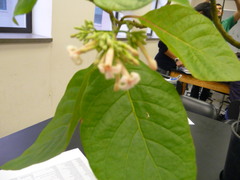
Cinchona pubescense:common name and origin

answer
Red cinchona (flowering) - South America
question
Cinchona pubescense: Plant part
answer
Reddish bark (related to coffee plants)
question
Cinchona pubescense: Chemical compound
answer
Quinine and Quinidine
question
Cinchona pubescense: Quinine Medical use and side effects
answer
Anti-malarial ("bad air") Side effects(aka cinchonism): Tinnitus (ringing ears), depressions, miscarriage, blurred vision
question
What did Ronald Ross discover?
answer
found the female mosquito carried the parasite that cause the disease, and that locals used to treat malaria
question
How did researchers combat Cinchonism
answer
Produced a synthetic version of quinine called chloroquinine
question
Cinchona pubescense: Quinidine medical use
answer
antiarrhythmic (controls fast rhythms of heart). Used to treat flatulence and loss of appetite.
question
Erythroxylon coca
answer
Coca - central/south america
question
Paullinia cupana: common name and origin
answer
Guarana -South America
question
Paullinia cupana: plant part
answer
seeds for a woody climber -Sometime fresh leaves
question
Paullinia cupana: Chemical compounds
answer
Caffeine and Tannins
question
Paullinia cupana: Uses
answer
Preparations are made from roasted, powdered seeds and water (soft drink in Brazil) -Caffeine- counteracts fatigue, as diuretic, weight loss, energy drinks
question
Tannins
answer
-treat diarrhea
question
What south american plant looks like many eyes and is legend to be the plant grown from a boys eyes who was killed by an evil spirit?
answer
Guarana
question
Who were the Scientists in the movie "20th century medicine man"?
answer
Richard Schultes and Mark Plotkin
question
What studies is the national cancer institute near Washington dc doing?
answer
Used plants to test possible cures for cancer and AIDS as well as trying to bring the Bald Eagle population back
question
Plant Healing system in Australia
answer
Aborigines at one time has a complex healing system but much of the traditions were lost.
question
Plant Healing system in Southeast Asia
answer
It is still being actively researched recorded and developed. Chinese influence is seen in many countries.
question
Important Medicinal plants in Australia and Southeast Asia
answer
Bluegum, Tea Tree, Kava Kava, Nux vomica
question
Eucalyptus globulus: common name and origin
answer
Bluegum (flowering) -Australia
question
Eucalyptus globulus: Plant part
answer
Large tree with white peeling bark -Mature leaves are used
question
Eucalyptus globulus: Chemical compounds
answer
Essential oils (volatile nature) with eucalyptol. - there are about 700 species Terpenes (aromatic compound gives smell)
question
Eucalyptus globulus: Use
answer
*Essential oils*- treat cold, nasal congestion, respiratory problems (in vicks vapor rub) -Mostly external application and pain relief *Terpenes*- show antimicrobial, anti-inflammatory and expectorant activities
question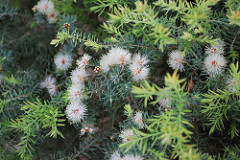
Melaleuca alternifolia

answer
Tea tree (white flowering plant) -Australia
question
Melaleuca alternifolia: Plant part
answer
Medium tree w/ papery bark (same family as eucalyptus) -Leaves are used
question
Melaleuca alternifolia: Chemical compound
answer
Essential oils Leaves have >60 terpenoids
question
Melaleuca alternifolia: Use
answer
Creams and ointments to treat skin conditions. -Campthor based aroma -surgery and dental hygiene due to high germicidal activity -aromatherapy and cosmetic products
question
Melaleuca alternifolia: Approved by what major organization?
answer
World Health Organization to treat cough and skin conditions
question
Piper methysticum: common name and origin
answer
Kava Kava -Southeast Asia
question
Strychnos nux-vomica: common name and origin
answer
Nux vomica (source of straighten, vomiting sensation, seed portion) - Southeast Asia (India)
question
What is India's traditional, natural system of medicine? How long has it been around?
answer
Ayurvedic medicine -; 4,000 years
question
Meaning of name Ayurvedic
answer
Ayur= Life, Vedic= knowledge or science "Science of life"
question
Rig Veda
answer
thousands of poetic hymns that contani the Ayurvedic principles and medicinal uses of herbs
question
What cultures are known for embracing the Ayurvedic concepts?
answer
Chinese, Tibetan and Greek
question
Main goal of Ayurvedic practice
answer
Gives practical and holistic set of guidelines to maintain balance and harmony between the mind and body. -Encourages mental, physical and spiritual health
question
Sages of India
answer
Control mind and meditation and way of living control last day of life through meditation and breath control.
question
How does Ayurveda classify individuals?
answer
According to three hereditarily determined body types
question
Tridoshas dosha
answer
compilation of the 3 body types in Ayurveda -vata, pita, and kapha
question
How do Ayurvedic physicians determine the body type (dosha) of a patient?
answer
Observations, interviews and pulse diagnosis
question
5 elements of Ayurvedic medicine
answer
Water, earth, fire, sky and air -describe body type and personality
question
Vata dosha
answer
Movement in the body
question
Pitta dosha
answer
Metabolism in the body
question
Kapha dosha
answer
Strength of the body
question
How is balance between Tridosha achieved?
answer
diet, yoga, massage, armoan, music therapy and herbal remedies.
question
Ayurveda herbal remedies focus on?
answer
Balance of the six tastes. This governs good digestion and all aspects of health. Each taste has beneficial effects but can be negative in excess
question
Rasas
answer
Ayurvedic 6 tastes: sweet, sour, salt, bitter, pungent, and astringent
question
Famous Ayurvedic medicinal plants
answer
Neem, Indian pennywort, Chaulmoogra, Sarpagantha, Sandalwood, winter cherry
question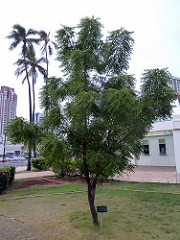
Azadirachta indica

answer
Neem tree -India, Sri Lanka and Burma -Large trees (white flowers
question
Azadirachta indica: Plant parts
answer
bark, leaves seeds and twigs
question
Azadirachta indica: Chemical compounds
answer
Terpene- Azadirachtin
question
Azadirachta indica: Uses
answer
Infusions and seed oil are used -Insecticidal and spermicidal, antimicrobial and anti fungal. -Hung on doors, chickenpox -cosmetic products: soap, shampoos, toothpaste, etc -ex. medimix and margo, twig used as toothbrush
question
Centella asiatica

answer
Indian pennywort - India -leaves are used and look like trebol used for brain boosting (memory) -same family as american pennywort
question
Hydnocarpus wightiana
answer
Chaulmoogra -India
question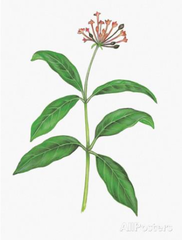
Rauwolfia serpentina

answer
Sarpagantha -India
question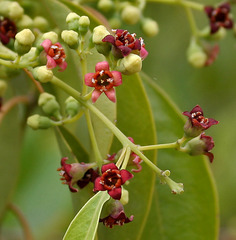
Santalum album

answer
Sandalwood -India -has essential oils used in massage and aromatherapy from bark. -Cutting down trees=near extinction
question
Withania somnifera: Common name origin
answer
Indian cherry asawantha India
question
Withania somnifera: Plant and part used
answer
Solenacea family-Looks like little tomato/cherry Roots are mainly used
question
Withania somnifera: Chemical compound
answer
Contain a complex mixture of chemical compounds ;80 Steroids and alkaloids - Withasomnine Leaves- withaferin (sterol)
question
Withania somnifera: Use
answer
massages-removes pain Tonic- induces sleep and relax Treats neurolgia, gout, fever, cough diuretic aphrodisiac Withaferin-used in antibiotic and possibly cancer
question
Traditional Chinese medicine system
answer
;5000 years old -good health and longevity -ying and yang and five elements
question
Yin and Yang
answer
opposites are needed to compliment eachother (ex: hot/cold)
question
5 elements of Chinese medicine
answer
earth, metal, water, wood, and fire
question
What are the 5 elements of Chinese medicine linked to?
answer
Main organs of the body: spleen, lung, kidneys, liver and heart
question
What other things are linked to 5 elements?
answer
5 motions and 5 seasons ect
question
What is Chinese medicine trying to achieve?
answer
balance between 5 elements and to grant vital energy (qi) - using yin and yang aspects
question
Chinese Medicine logic: treating a cold
answer
use a hot herb ex: ginger tea
question
Chinese Medicine logic: treating hot symptoms (fever or hot flashes)
answer
use cooling herbs
question
How are Chinese herbal medicine prepared?
answer
6000 different herbs are given fixed mixtures or formulas of up to 20 herbs according to traditional recipes found in ancient compendium.
question
What other T.M system is closely related to Chinese?
answer
Korean. Both of which influence Japanese.
question
Kampo
answer
Japanese Medical System
question
Father of Chinese medicine
answer
Chinese Emperor Shen Nong (Sung Dynasty). Wrote "The Great Bative Herbal" (2800 BC)
question
What is the most complete reference to chinese herbal prescriptions?
answer
Modern Day Encyclopedia of Chinese Materia Medica (1977) -lists 4800 plant medicines.
question
Some important Chinese medicinal Plants
answer
Chinese Wormwood, Desert Tea, White Peony, Ginseng, Chinese rhubarb
question
Artemisia annua
answer
Chinese wormwood (Coartem) - China
question
Ephedra sinica
answer
Desert Tea (Ma Huang) -China -Shrug somewhat wiry and greyish green *GYMNOSPERM*
question
Ephedra sinica: Plant Parts used
answer
Stem -sometimes aerial parts
question
Ephedra sinica: Chemical compound
answer
Ephidrine- isolated by Nagai in 1987 -makes medicine called ephedra
question
Ephedra sinica: Use
answer
Asthma, nasal congestion, bronchitis, CNS stimulant (enhances concentration) -bronchodilator -Stimulant with thermogenic properties- increase metabolism when combined w/ caffeine
question
What plants did Neanderthals use 60,000 years ago to cover bodies?
answer
Ephedra sinica
question
Pseudoephedrine
answer
Synthetic version of Ephidrine used as behind counter decongestion
question
Ephedra sinica: Symptoms
answer
Overdose: anxiety, convulsion, rapid heart beat and death,
question
Ephedrine by itself: sideeffects
answer
Insomnia and death Prolong use: dependency
question
Paeonia lactifloria
answer
White peony (milk, white, flower)
question
Paeonia lactifloria: Plant part used
answer
Dired roots
question
Paeonia lactifloria: Use
answer
menstral disorders, dyspepsia, dementia, vertigo, anticoagulant *Paeoniflorin*- antipyretic, analgesic, anti-inflammatory, sedative. Contracts uterus on test animals.
question
Paeonia lactifloria: Chemical compound
answer
Paeoniflorin
question
Where did European medicine originate?
answer
Hippocrates (460-377) and Aristotle (384-322 B.C) whose ideas rooted in ancient beliefs in India and Egypt
question
Father of European Medicine
answer
Hippocrates- believed that sickness was caused by bodily problems not evil spirits
question
Who started the science of botany?
answer
Aristotle and his pupil Theophrastus- with detailed descriptions of the species growing in the botanical gardens in Athens
question
Greek and Roman medicine was based on what belief?
answer
That the world was composed of four elements- and their corresponding humours
question
European: The four elements- and their corresponding humours
answer
? Earth= blood ? air=phlegm ? fire= black bile ? water = yellow bile
question
European: What did the four humours influence
answer
health, temperament and cold, heat, dampness or dryness
question
How would the European physicians treat patients and return balance?
answer
Bleed patients out using leeches. Then used a corresponding range of herbs
question
What was the most significant Greek contribution and the first European herbal standard reference?
answer
5-volume De Meteria Medica written by the Greek physician Dioscorides in the first century A.D. 1000 simple drug preparations.
question
How did Europeans cultivate medicinal plants?
answer
In monasteries as early as 800 A.D
question
When did the experimental approach to herbal medicine start in Europe?
answer
the 17th and 18th centuries
question
Dr. William Withering
answer
(1741-1799) experimented with foxglove extract for heart problems
question
Where in Europe is the use of herbal teas and mixtures popular?
answer
Germany, Austria, France, Italy, Great Britain, Switzerland
question
When was there a tremendous advancement in herbal medicine in Europe?
answer
first half of 20th century
question
European: Where are many modern medicines derived from?
answer
were isolated, purified products from traditional plant-derived extracts
question
European: Active compounds isolated from plants that are still used in medicine today
answer
? Atropine ? resepine ? morphine ? quinidine ? Ajmaline ( is antiarrhythmatic) from rowolfia serpentina ? digoxin ? taxol ? vinblastine
question
Important European Medicinal Herbs
answer
Deathly nightshade, fennel, stinging nettle, valerian
question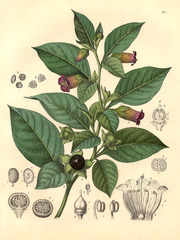
Atropa belladonna: common name and origin

answer
Deathly nightshade -Europe
question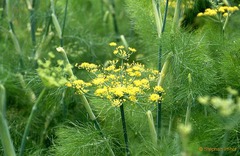
Foeniculum vulgare: common name and origin

answer
Fennel - Europe
question
Foeniculum vulgare: parts used and application
answer
-Roots used as spice for digestion
question
Urtica dioica
answer
Stinging nettle- Europe and Asia -No thorns, there is a gland where chemical compound accumulates on bulb -dioecious
question
Dioecious
answer
di= two oecious=house Meaning plant is either male or female
question
Urtica dioica: Plant parts
answer
Aerial parts, leave or roots are used (stem branches leaves)
question
Urtica dioica: Chemical compound
answer
Phenolic compounds
question
Urtica dioica: Use
answer
*Leaves*- anti-rheumatic, mild diuretic, analgesicm and anti-inflammatory action. Relieves pain of arthritis and rheumatism. Also nutritional supplement due to high mineral content
question
Valerian officinalis
answer
Valerian - Europe and Asia
question
Valerian officinalis: plant parts used
answer
Fleshy roots and aromatic rhizomes -leaves have compounds but not as effective
question
Valerian officinalis: Chemical compound
answer
Volatile oils- Valerinic acid
question
Valerian officinalis: Use
answer
Valium- for traumatic events calm ppl down, relaxant -non-addictive tranquilizer -easing sleeplessness and minor nervous conditions -WHO supports to ease PMS and menopause symptoms
question
Aromatherapy
answer
a healing system that uses essential oils in the form of inhalations massages, baths and perfumes to improve physical and psychological health -used in ancient times in all cultures
question
Father of modern day aromatherapy
answer
Ren'e Gattefosse 1928 -First to use the term
question
Are there health benefits to aromatherapy
answer
Yes. Essential ouls are known to have various health benefits when absorbed through the mucous membranes of the nose or lungs or skin
question
Areas aromatic oils act on:
answer
Central nervous system, spasmolytic (eucalyptus) or antiseptic (tea tree) -help restore health through positive effect on mind and mood
question
Bach Flower Therapy
answer
Similar to aromatherapy, but based on liquid extracts of wild flowers
question
Dr. Edward Bach
answer
developed bach flower therapy in 1930s-believes that physical illness is a manifestation of emotional problems - mentioned on Dr. Oz
question
Homeopathy
answer
In Greek means "like" "Suffering" -principle of "like cures like"
question
What is one of the most widely practiced alternative therapies in the Western World?
answer
Homeopathy -dates back to Hippocrates
question
Homeopathy system
answer
Plants used in very dilute forms to treat illnesses associated with the high doses of the same plant. Which stimulates the body's own defenses against the illness
question
Examples of Homeopathy
answer
Belladonna in diluted for is used to cure scarlet fever - Minerals (sulfur) and animal products (bee venom) are also popular
question
Human health disorders may result from what?
answer
genetic factors or environmental influences
question
Environmental influences that may cause human health disorders
answer
Pathogens, injury and toxins
question
How do you treat a disorder that is complex or if the cause is unknown?
answer
The treatment is to remove the symptoms -Such as pain and swelling thus improving the quality of life
question
Synthetic medicines
answer
Potent and specific and are often associated with undesirable side effects
question
Phytomedicines
answer
usually less specific and often aim at more than one molecular target -Not usually the first choice to treat, severe life threatening conditions
question
What major instances are photmedicines useful in?
answer
Leading causes of death like cancer, heart, and lung disease
question
Cancer
answer
Comprises a large variety of malignant tumors. And is fatal if a tumor destroys the functions of vital organs. Cells divide much faster than normal cells
question
HeLa cells
answer
Henrietta Lack's cells that are still being cultured today
question
What kind of compounds would be useful to combat cells division?
answer
Alkaloids (Vinblastine or camptheca chinese happy tree )
question
What kind of compounds kill cancer cells?
answer
Cytotoxic substances kill already formed cancer cells.
question
Two most commonly employed means of chemotherapy?
answer
Killing cancer cells and stopping cell division
question
Main plants used in cancer treatment:
answer
Chinese happy tree, Rosy periwinkle, Mayapple, Pacific Yew, European mistletoe
question
Camptotheca acuminata: Common name
answer
Chinese happy tree (camptothecine compound)
question
Podophyllum peltatum: Common name
answer
Mayapple
question
Podophyllum peltatum: Plant description and origin
answer
Flowering and looks like an Elephant foot. (podo=feet phyllum=leaves) -Ripe fruit is edible.
question
Podophyllum peltatum: Chemical compound
answer
Podophyllumtoxin and peltatins in the resin from the rhizomes and roots -highly toxic when ingested
question
Podophyllum peltatum: Uses
answer
to remove warts, NaM main area? -Resin is corrosive and kills underlying malignant tissues
question
How do the toxins in the mayapple stop cell division?
answer
The toxins act on spindle fibers
question
Podophyllum peltatum: history and now
answer
Traditionally ysed by natives of N. America as a purgative and to remove warts. Now used in testicular tumors and in breast and lung cancer
question
Podophyllum peltatum: common form
answer
semi synthetic due to high toxicity and related side effects
question
What plant was use to treat genital warts secretly in the 1800s?
answer
Podophyllum peltatum (Mayapple)
question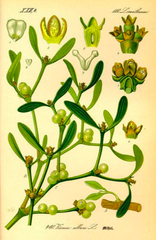
Viscum album: Common name and plant description

answer
European mistletoe Album (white) -same family as the american, green fruit -Semi parasitic, woody shrub
question
Viscum album: common form
answer
Fresh or dried herb or leaves
question
Viscum album: chemical compounds
answer
Viscotoxins
question
Viscotoxins
answer
As toxic as cobra venom. When injected, show immune-stimulating effects. At high concentrations the cytotoxic and anti-tumor activities predominate
question
Viscum album: Use
answer
prolong life of cancer patients
question
What causes heart insufficiency?
answer
An inability of the heart muscle to supply the body with adequate amounts of blood
question
Symptoms of heart insufficiency
answer
-difficulty breathing (dyspnea), fatigue, tachycardia -Nocturia= frequent urination -Adema= accumulation of fluids -Cyanosis= blue green coloring of skin
question
New York Heart Association has published?
answer
a scale of heart insufficiency with four stages:
question
NYHA 1, NYHA 2:
answer
heart complaints under physical activity
question
NYHA 3 and 4:
answer
heart complaints under moderate activity
question
Crataegus laevigata: common name and description
answer
Hawthorns -Shrubs or small trees, white flowers and little cherries -Cherry family Europe & Asia
question
Crataegus laevigata: Chemical compounds and common form
answer
Procyanidins and flavanoids found in dried leaves/flowers -Special extracts are used as a cardiotonic
question
Crataegus laevigata: Use
answer
Treats NYHA 1 and 2 and bradycardia (slow heart beat) -Increases the strength of contraction and coronary blood flow. - removes some of the symptoms of heart failure (edema, hypertension, anxiety, high blood pressure) -Safe to take regularly
question
What compound is used to treat NYHA 3 and 4?
answer
Cardiac glycosides
question
What plants are used to treat NYHA 3 and NYHA 4 heart conditions
answer
Dogbane, purple foxglove, oleander, strophantus, Yellow oleander -All in Apocyanaceae or Milk Weed family
question
What is a good sign that a plant is in Apocyanaceae or Milk Weed family?
answer
When you break a branch sticky white sap or latex comes out
question
Difitalis purpurea
answer
Purple foxglove -Used to treat NYHA 3 or 4 heart conditions
question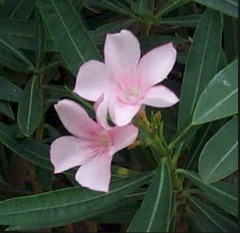
Nerium oldeander

answer
Oleander (pink) -Used to treat NYHA 3 or 4 heart conditions
question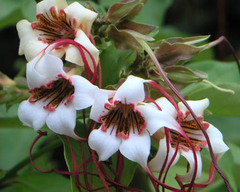
Strophanthus gratus: common name and application

answer
Strophantus -Used to treat NYHA 3 or 4 heart conditions
question
Thevetia peruviana
answer
Yellow Oleander -Used to treat NYHA 3 or 4 heart conditions
question
Apocynum cannabinum: Common name and plant description
answer
Dogbane / Indian hemp -Shrubby, extremely toxic -Found all over N. America
question
Apocynum cannabinum meaning
answer
dog go away
question
Apocynum cannabinum: Chemical compound and plant part
answer
Cymarin found in roots -Milky latex may cause blisters
question
Apocynum cannabinum: Use
answer
Treat NYHA 3 or 4 - Lowers pulse rate and increases blood pressure -Also used in HOmeopathy
question
Heart: Rauwolfia alkaloids
answer
Serpentine Anti-hypertension
question
Heart: Ephedra
answer
Anti-hyportensive
question
Heart: Coumarins
answer
Anticoagulants
question
Heart: Theophylline (tea leaves)
answer
Diuretics
question
Arrhythmia and treatment
answer
Problem w/ heart rhythm
question
Antiarrhythmic drugs:
answer
Digioxin, Ouabain, Quinidine
question
Arteriosclerosis
answer
risk factor for cardiac infraction and stroke can result from heperlipidemia and cholesterol
question
Plants used to treat Arteriosclerosis
answer
Garlic, onion, Tea plant (Tree), Tumeric, Ginseng
question
Allium sativum
answer
Garlic -used to treat Arteriosclerosis
question
Allium cepa (heart)
answer
Onion -used to treat Arteriosclerosis
question
Camellia sinensis
answer
Tea plant (Tea tree) used to treat Arteriosclerosis and Bronchitis Theophylline extracts-helps in blood flow, dilating vessels
question
Curcuma longa
answer
Tumeric -used to treat Arteriosclerosis
question
Panax ginseng
answer
Ginseng -used to treat Arteriosclerosis
question
Arteriosclerosis: Holistic approach
answer
-Well balanced, sensible diet -exercise -no smoking -stress-free lifestyle -positive outlook
question
Diseases related to the Respiratory System
answer
Cold, rhinitis (inflammation of nasal caity, sinusitis, and otitis (ear infection), congestion, cough, bronchitis, asthma
question
Causes of cold, rhinitis, sinusitis, and otitis
answer
Infectious viruses detroy mucous membrans which lead to bacterial infections and painful inflammation of the respiratory tract and middle ear
question
Treatment for cold, rhinitis, sinusitis, and otitis
answer
Mostly symptomatic to reduce inflammation and dryness
question
Plants used externally to treat cold, rhinitis, sinusitis, and otitis
answer
Camphor, Blue gum, Pepper mint
question
Cinnamomum camphora
answer
Camphor -Used as essential oil to treat respiratory disease
question
Eucalyptus globulus
answer
Blue gum Eucalyptus oil to treat respiratory disease
question
Mentha x(cultivated form) piperita
answer
pepper mint -to treat respiratory disease
question
Plants used internally to treat cold, rhinitis, sinusitis, and otitis
answer
Onion, Ephedra, Echinacea, Black Elderberry
question
Allium cepa (respiratory)
answer
Onion -to treat respiratory disease -Juice mixed w. honey overnight drain honey and take table spoon 3-4 times a day
question
Ephedra spp.
answer
-to treat respiratory disease -usually prescribed
question
Echinacea spp.
answer
-to treat respiratory diesease
question
Sambucus nigra: common name and plant description
answer
Black Elderberry -Black fruit used to make jelly -shrub/small tree - Europe, Asia, N Africa, Eastern N. America
question
Sambucus nigra: Chemical compound and use
answer
Rutin Dried flower are used to treat colds inflammation of respiratory tract and hay fever
question
Expectorants
answer
help clear chest congestion by coughing out mucus
question
Plants used to treat congestions
answer
Ipecac, Volatil oils (Eucalyptus, anie, fennel, thyme)
question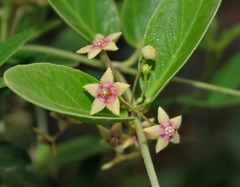
Psychotria ipecacuanha: Common name and description

answer
Ipecac -looks like coffee plant (same family- Rubiaceae) -small shrub -S. America- Brasil
question
Psychotria ipecacuanha: Chemical Compound and use
answer
Emetine -Dried roots/powder used for chronic bronchitis w/ dry cough (.5-2g) -emetic purposes -also induces vomiting
question
Antitussives
answer
used to supress cough EX: Codeine and pertussis
question
Papaver somniferum
answer
Opium -Codine used to supress cough
question
Lobelia inflata
answer
Indian Tobacco Used to treat Pertussis (whooping cough), bronchitis, and asthma
question
Bronchitis and treatment
answer
Inflammation of bronchi; fever -Bronchodilators: Relax the smooth muscles of the bronchioles
question
Plants used to treat bronchitis
answer
Jimson weed, Ephedra, Tea Tree
question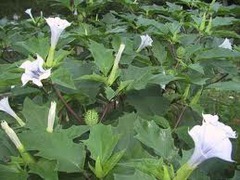
Datura stramonium: common name and description

answer
Jimson weed -Robust annual -looks like angels trumpet -Tropical N. Murica -same family as atropa belladonna
question
Datura stramonium: Active compounds and use
answer
Hyoscyamine, atropine, scopolamine Found in leaves mainly Used to in cough syrup to treat asthma and bronchitis -Used in Homeopathy
question
Datura stramonium: Side Effects
answer
-Can cause hallucinations and is deadly
question
Asthma
answer
influenced by infections, toxins and allergens that cause chronic inflammation
question
Plants used to treat Asthma
answer
Atropa belladonna, tea tree, Ephedra, Jimson weed, Indian Tobacco
question
Dementia
answer
loss of individually acquired intellectual capabilities: memory, concentration, power of judgement etc. -Most treatments are symptomatic and can temporarily improve improve or delay the progression
question
Ginkgo biloba:Common name
answer
Maiden hair tree
question
Ginkgo biloba: Medical Application
answer
-Delays onset of dementia, treats vertigo and tinnitus
question
Plants used to treat dementia
answer
Ginkgo and Snowdrop
question
Galanthus nivalis: Common name and description
answer
Snowdrop Small plant w/ nodding white flowers
question
Galanthus nivalis: Origin
answer
Europe
question
Galanthus nivalis: Chemical compounds and in what part
answer
Galanthamine Found in Bulbs along w/ other toxic alkaloids
question
Galanthus nivalis: Use
answer
Approved for use of alzheimers in most countries -Increases the concentration of acetylcholine, a neurotransmitter.
question
Vertigo
answer
or dizziness- a symptom not a disease -sensation of spinning or whirling that occurs as a result of disturbance in balance (equilibrium)
question
Main plant used to treat Vertigo
answer
Ginkgo Biloba - 240 mg/day
question
Tinnitus
answer
ringing int he ear -can lead to insomnia, lack of concentration, anxiety, depression, headache, atc
question
Main plant used to treat Tinnitus
answer
Ginkgo Biloba - clinically proven 120-240 mg/day
question
Different types of Digestive tract disorders
answer
Irritation of the stomach and intestine -Gastritis, ulcers, diarrhea, constipation, -Haemorrhoids
question
Symptoms of irritation of the stomach and intestine
answer
Dyspepsia (indigestion) spasms (involuntary contraction of muscle-often painful) -heartburn, lack of appetite, vomiting, nausea, flatulence
question
Treatment for symptoms of irritation of stomach and intestine
answer
Antiacids, antispasmodics, caminatives (gases), purgatives, vermifugages
question
Plants used for irritation of stomach and instestine
answer
Atropa belladona, caraway, coriander, pomagranate, ginger, plant enzymes
question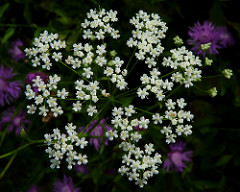
Carum carvi: Common name and description

answer
Caraway -small branched herb with tiny flowers
question
Carum carvi: Plant part used and common form
answer
Small, dry, brown fruits are used as carminatives
question
Carum Carvi: Application/ Use
answer
-Also used as a spice and colic remedy
question
Carum carvi: chemical compound and use
answer
Volatile oils -treat dyspepsia, flatulence, and intestinal spasms
question
Punica granatum
answer
Pomegranate
question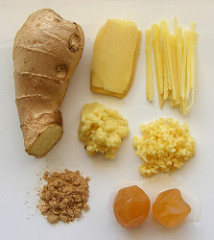
Zingiber officinale

answer
Ginger
question
Popular plant enzymes
answer
Papaya, pineapple, figs
question
Gastrits, Ulcers cause
answer
irritation of the mucous membrane of the stomach (Alcohol, drugs, HCl)
question
What is the bacteria that causes stomach ulcers?
answer
Helicobacter pylori - treated by antibiotics
question
How is Gastritis/Ulcers treated?
answer
-Tropane alkaloids inhibit gastric acid secretion -Anti-inflammatory drugs protect mucous membranes
question
Plants used to treat gastritis and ulcers
answer
Atropa belladonna, Caraway, Coriander/Cilantro
question
Coriandrum sativum: common name, plant description and origin
answer
Coriander/Cilantro Annual aromatic -Mediterranean
question
Coriandrum sativum: Plant part used
answer
Fresh leaves (cilantro) and dry fruits (coriander)
question
Coriandrum sativum: chemical compound and use
answer
Essential oil- lianalool -spasmolytic, carminative, and antimicrobial -insulin control -treats lack of appetite and dyspepsia
question
Diarrhea causes:
answer
Psychosomatic and autoimmune disturbances -Stomach infections -Intoxication and hormonal disturbances
question
Diarrhea treatment:
answer
Plants with anti inflammatory and carminative effects
question
Plants used to treat Diarrhea
answer
Caraway, Asafetida, Mint, Astringents (Tea tree), Witch Hazel, Chamomile
question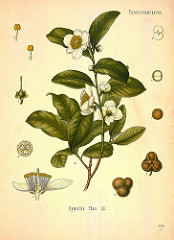
Camellia sinensis: Common name and compound

answer
Tea Tree -Tannin rich
question
Astringent
answer
Tannin rich used to treat Diarrhea
question
Hamamelis virginiana
answer
Witch Hazel
question
How is Witch Hazel use in digestive disorders?
answer
-shrinks inflamed tissue
question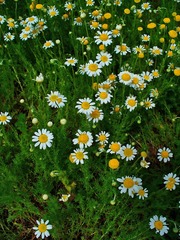
Matricaria recutita: Common name and plant description

answer
Chamomile -White petals, yellow center, family of ragweed -annual herb
question
Matricaria recutita: Origin
answer
-Eastern Europe and W. Asia
question
Matricaria recutita: Plant part used and in what form
answer
Dried flower head extracts and taken as tea (less than 3 mg) -Or topically
question
Matricaria recutita: Chemical compound and use
answer
Essential oils, flavonoids and coumarins -used for dyspepsia, gastritis, diarrhea and nausea. -treats skin conditions due to their antibiotic & anti-inflammatory effects
question
Constipation causes
answer
Food low in fibers, lack of motility, medicines, and psychosomatic disturbances
question
Plants used for treating constipation
answer
Aloe, blackthorn, chinese rhubarb, tamarind, flax
question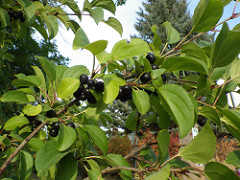
Rhamnus catharticus:Common name and Use

answer
Buckthorn -stimulant laxative (one time cleansing)
question
Rheum palmatum: common name
answer
Chinese rhubarb (palm shaped leave)
question
Rheum palmatum: plant part used and form
answer
Sliced and dried rhizomes -Powdered in form of tea (1-2 grams)
question
Rheum palmatum: Use
answer
Stimulant laxative used to cleanse stomach
question
Rheum palmatum: Chemical compound
answer
Anthraquinone glycoside -not recommended to be used in combination with other medications
question
Heamorrhoids: Causes
answer
Aka Piles -Dilation and inflammation of anal arteries
question
Plants used to treat Haemorrhoids:
answer
Atropa belladonna, Witch Hazel and St. John's wort
question
Atropa belladonna application for haemorrhoids
answer
suppository,
question
Witch Hazel application for haemorrhoids
answer
shrink tissue
question
St. John's wort application for haemorrhoids
answer
topical heal
question
What is the main organ of metabolism and detoxification in our body?
answer
Liver
question
Where does Bile come from?
answer
Secreted by liver
question
What is cirrhosis and what is it caused by?
answer
Scarring of the liver. Caused by long term alcohol abuse
question
What plants are used to treat liver disorders?
answer
Globe artichoke, Soybean, Milk thistle
question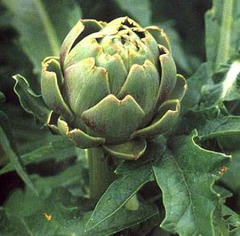
Cynara scolymus: Common name, plant description, chemical compound

answer
Globe artichoke -same family as sunflower -leaves contain Cynarin
question
Silybum marianum: common name and description

answer
Milk Thistle -Herb w/ milky latex
question
Silybum marianum:Origin
answer
S. Europe, N. Africa, W. Asia
question
Silybum marianum: What part of the plant is used? What form?
answer
Fruits and extracts are used in a tonic (175 mg / day)
question
Silybum marianum: Use
answer
Achenes are used in digestive tonic for dyspepsia, bile disorder and liver regeneration Extracts are used toxic liver damage, hepatitis, cirrhosis
question
galactogogue (Milk Thistle)
answer
a food or drug that promotes or increases the flow of a mother's milk. Ex: Milk Thistle
question
Plants used for Bile Secretion disorders
answer
Celandine, Tumeric, Absinthe/Northwood, Mint
question
Chelidonium majus: common name and plant description
answer
Celandine -perennial herb w. yellow latex
question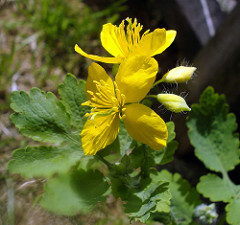
Chelidonium majus: Origin

answer
-Europe, N. Africa, W. Asia
question
Chelidonium majus: Chemical compound
answer
Plant extracts contain ;20 alkaloids including Berberine and Chelidonine
question
Chelidonium majus: Use
answer
Liver and bile disorders to treat gall stones, jaundice and hepatitis -Used externally to remove warts
question
What is Rheumatism and Arthritis?
answer
Inflammation and degeneration of skeletal muscles bones and joints, often accompanied by severe pain
question
Plants used to treat Arthritis and Rheumatism
answer
Devils claw, black mustard, Chili pepper, Blue gum, Stinging needle
question
Harpagophytum procumbens: Common name
answer
Devils claw
question
Harpagophytum procumbens: Medical application
answer
-Treats arthritis
question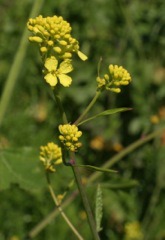
Brassica nigra: Common name and plant description

answer
Black Mustard -Ancient herb w/ long seed pods (silique)
question
Brassica nigra: Origin
answer
- Europe and Asia
question
Brassica nigra: Plant part used
answer
Ripe seeds and seed oil -Seeds yield pungent mustard oil
question
Brassica nigra: Chemical compound
answer
Glucosinolates- sinigrin in the oil increases peripheral blood flow.
question
Brassica nigra: Side effect
answer
-may cause skin irritation
question
Brassica nigra: use
answer
Remedy for joins, makes paste out of seeds to treat inflammation and pain
question
What is Gout?
answer
Inflammation of the joints in the knee, wrist finger, big toe
question
Capsicum frutescens: common name
answer
Chili pepper
question
Capsicum frutescens: application
answer
-used to treat rheumatism and arthritis
question
Eucalyptus globulus: common name
answer
Blue gum
question
Eucalyptus globulus: Pain application
answer
-used to treat rheumatism and arthritis
question
Urtica dioica: common name
answer
Stinging nettle
question
Urtica dioica: pain application
answer
-used to treat rheumatism and arthritis
question
Plants used to treat gout
answer
Meadow saffron
question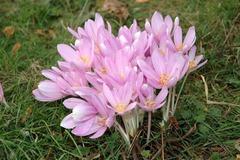
Colchicum autumnale: Common name and plant description

answer
Meadow saffron/ autumn crocus -Herb w/ a fleshy corm
question
Colchicum autumnale:Origin
answer
-Europe, N. Africa
question
Colchicum autumnale: plant part used
answer
Cut and dried corms, seeds flowers
question
Colchicum autumnale: chemical compound
answer
Colchicine- from all plant parts used -small doses no more than 8 mg / day. Anything ;10 is toxic
question
Colchicum autumnale: Use
answer
Excellent anti-inflammatory agent ; pain killer Was considered in cancer therapy because it interferes spindle fiber formation. -excellent for therapy but highly toxic
question
What plant induces polyploidy in other plants?
answer
Meadow saffron
question
Ophthalmology
answer
Dieses of the eye- Glaucoma, inflammation, infections
question
Plants used to treat any ophthalmology
answer
Atropa belladonna, Buckwheat, European Barberry, Marijuana
question
Atropa belladonna's use in ophthalmology
answer
controlls inflammation of iris, cornea, and diagnostics
question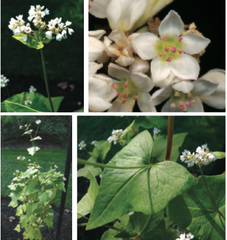
Fagopyrum esculentum: common name

answer
esculentum (edible) Buckwheat
question
Fagopyrum esculentum:medical application
answer
-to control internal bleeding and edema in the eye
question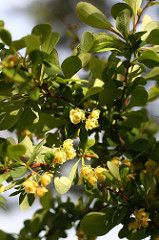
Berberis vulgaris: Common name and plant description

answer
Barberry -Thorny shrub
question
Berberis vulgaris: Origin
answer
-Europe and Asia
question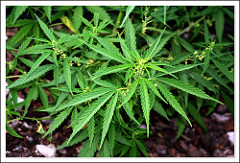
Cannabis Sativa: Common name and plant description

answer
Sativa (cultivated) Marijuana
question
Cannabis Sativa: Origin
answer
-Asia: China and India
question
Cannabis Sativa: Parts used
answer
Female flowers and young leaves have glandular trichomes
question
Glandular trichomes
answer
Epidermis extensions found on female flowers and young leaves of the Marijuana plant. Contains high levels of psycho-active compounds.
question
Marijuana: Chemical compounds
answer
Cannabinoids, Tetrahydrocannabinol (THC), Cannaidiol (CBD)
question
Cannabinoids
answer
Used in Glaucoma patients to relieve intraocular pressure
question
Tetrahydrocannabinol origin
answer
Psycho-active comound found mostly in Cannabis Indica (India) and a little bit in Cannabis sativa
question
Which species of Cannabis is used as a fiber source?
answer
Cannabis sativa- China
question
Cannabidiol (CBD)
answer
Does not contain psycho active properties. Therefore is a "safe" Cannabinoid
question
Medicinal use of Cannabidiol
answer
Anti-epileptic activity (many clinical trials) - Powerful effects on CNS: Memory, emotions, concentration, time, coordination.
question
Tetrahydrocannabinol medicinal use
answer
Respiratory disorders: emphysema, chronic bronchitis, asthma -Eases nausea and vomiting for chemo patients
question
Risks associated with abuse of marijuana
answer
Impairment of short term memory, personality problems, lack of motivation Was thought to be a "Gateway drug", but recent studies disprove this and instead claim alcohol is.
question
True/False: Moderate marijuana smokers are at a lower risk of lung cancer
answer
True
question
Plant used to treat intese pain caused by surgery, cancer,fractures, wounds etc?
answer
Opium
question
Most abundant Alkaloid: Morphine
answer
-Strong analgesic/narcotic(makes drowsy) -Readily absorbed -Lasts longer
question
Migraine
answer
Affects women more than men Involves a disturbance of cerebral blood circulation
question
Migraine remedies
answer
Soak feet in hot water Paste of crushed ginger and apply to forehead.
question
Different types of Migraines/ Headaches

answer
Sinus (behind forehead/cheekbones) Cluster (in and around one eye) Tension (band squeezing head) Migraine (on one side)
question
Plants used to treat Migraines
answer
Feverfew and Butterbur
question
Chrysanthemum parthenium:common name and application
answer
Feverfew -Treats migraines fever, and rheumatism -Take as tea 100mg every now and then
question
Chrysanthemum parthenium:Origin
answer
-European T.M
question
What plant is used in germany to induce mensturation and therefore should not be taken when pregnant?
answer
Feverfew
question
Petasite hybridus: Common name and plant description
answer
Butterbur -Robust herb -grows in wet marshy riverbanks/freshwater area
question
Petasite hybridus: origin
answer
-Europe and N.W. Asia
question
Petasite hybridus: Parts use
answer
-leaves are round and unique inflorecense
question
Petasite hybridus: Chemical compound
answer
Terpene- extracted from rhizomes
question
How are the toxic alkaloids removed from Butterbur to isolate Terpene?
answer
Via CO2 and cannot be done on your own. Therefore it is dangerous to take on your own.
question
Petasite hybridus: Use
answer
Proven to reduce pain in migraine by 56% -14 times more effective than papaverine Used since middle ages for muscle spasms and convulsions
question
Neuralgia
answer
Pain along the nevers which occur in discrete attacks
question
Plants used to treat neuralgia
answer
Yellow Jasmine, Asawagantha, Clove tree
question
Gelsemium sempervirens: common name and plant description
answer
Yellow Jasmine (no relation to real jasmine) -Climber from eastern part of N. America
question
Gelsemium sempervirens: Chemical compounds and form of dosing
answer
Alkaloids- Gelsemine Taken as tincture 0.3 grams Very toxic even in small quantities (1-3g)
question
Gelsemium sempervirens: Use and side effects
answer
Treats Neuralgia for face and dental Used as decoration around the house (dangerous for children and pets)
question
Depression causes
answer
disturbances of the equilibrium between neurotransmitters, receptors and transporters of the neurotransmitters
question
Depression symptoms
answer
low spirit, cheerless mood, loss of interest and motivation adn fatigue
question
Plant used to treat depression
answer
Hypericum perforatum- St. John's wort -Interacts with up to 50% of prescription drugs
question
Treatment of Anxiety
answer
With anxiolytics or tranquilizers. To seperate the influence of psychic conditions on the vegitative system.
question
Plants used to treat anxiety
answer
Hops, St. Johns wort, Kava, Snakeroot
question
Piper methysticum: common name and medical application
answer
Kava Kava -treats anxiety
question
Rauwolfia serpentina: common name and medical application
answer
Snakeroot -treats anxiety and hypertension -Used by Gandhi for tea
question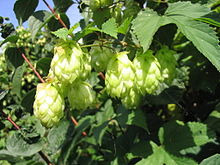
Humulus lupulus: Common name and plant description

answer
Hops Modifies leaves close to flower used in tea
question
Humulus lupulus: Use and Chemical compound
answer
Treats Anxiety, Insomnia, tension and restlessness -Different type of THC -Non-addictive but induces sleep so don't take too much -Workers fell asleep in fields
question
Plants used to treat insomnia, tension and restlessness
answer
Hops, lemon balm, passion flower, valerian
question
Melissa officinalis:Common name and medical use
answer
Lemon Balms -Used to treat insomnia, tension and restlessness
question
Valerian officinalis:common name and medical application
answer
Valerian -Used to treat insomnia, tension and restlessness
question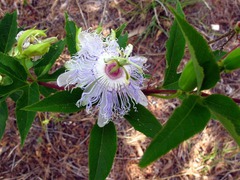
Passiflora incarnata: Common name and plant description

answer
Passion flower -Woody vine with tendrils
question
Passiflora incarnata(edulis):Origin
answer
- E. and S. parts of North 'murica
question
Passiflora incarnata: Chemical compounds and plant part
answer
Leaves and thin stems are used in extracts -contain flavonoids -No active compounds known
question
Passiflora incarnata: Use
answer
Treats nervousness and insomnia -no side effects but may make you too relaxed -drinking 2-3 times a day is safe
question
Wounds ; Haematoma:
answer
Aloe, Witch Hazel
question
Infections ; itching:
answer
Tea tree oil. Garlic, Camphor, Chamomile
question
Eczema:
answer
Primrose oil, Chamomile
question
Warts:
answer
Mayapple
question
Horse Chestnut : description

answer
( white flowers) Deciduous tree
question
Horse Chestnut :origin
answer
from E. Europe to C. Asia.
question
Horse Chestnut : parts used and form
answer
Tinctures (from seeds, bark, leaves)
question
Horse Chestnut : application for skin conditions
answer
-gargled for mouth ulcer and also used in skin creams -seed extracts are venotonic taken internally for varicose veins
question
Horse Chestnut : compound
answer
saponins, and tannins
question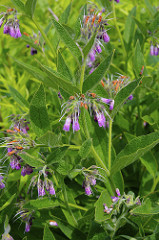
symphytum officinale: common name and description

answer
-Comfrey, ( purple flower) -A perennial herb
question
symphytum officinale:origin
answer
Europe ; W . Asia . Common in N.America
question
symphytum officinale: parts used
answer
Dried rhizomes ; roots
question
symphytum officinale: application
answer
-used as poultice ; paste ( external use only) -wound-healing, sprains, fractures, dislocations, boils, etc Internal use ONLY
question
symphytum officinale: side effects
answer
carcinogenic and mutagenic can cause liver damage
question
Urinary tract conditions
answer
infections inflammation kidney stones BPH
question
Urinary tract conditions : plants used
answer
Arctostaphylos uva-ursi- Bearberry Asparagus, Cranberry- Diuretic Butterbur- for kidney stones Corn Silk , Dandelion leaves Camellia Tea
question
Bearberry: description and origin

answer
- related to blueberry A shrub from the Arctic regions of Asia, America ; Europe.
question
Bearberry:Parts used and application
answer
Leaves are used as tea for urinary tract infections ; inflammations. -antibacterial, antifungal ; antiseptic.
question
Bearberry: compound
answer
-arbutin( used with Sodium Bicarbonate, to promote action)
question
Reproductive system disorders - Female: problems and treatments
answer
Include menstrual disorders, PMS, inflammation of the genital tract. hormonal mimetic are used for therapy
question
Reproductive system disorders - Female: Plants used
answer
-Black Cohosh -Nutmeg- for menstrual irregularities induces menstruation -Vitex agnus-castus- Chaste tree
question
Black Cohosh : use
answer
For PMS, menopausal symptoms -act as mild sedative
question
Nutmeg:use
answer
for menstrual irregularities induces menstruation ;5g could be toxic
question
Vitex agnus-castus: common name and description
answer
-Chaste Tree -Shrub or a small tree
question
Vitex agnus-castus:origin
answer
-originally from the Mediterranean. mENTIONEd IN "de Materia Medica" Written by dioscorides
question
Vitex agnus-castus:use /application
answer
-used for gynecological complaints. -In an extract form ( 3g of dried fruit.day) used in treating PMS, dysmenorrhea ; menopausal symptom
question
Vitex agnus-castus:compounds and parts used
answer
variety of phytochemicals from dried, ripe fruits
question
Reproductive system disorders- Male Infection: symptoms
answer
Nocturia, Dysuria, Hematuria
question
Reproductive system disorders- Male Infection: plants used
answer
Bearberry, Saw Palmetto
question
Reproductive system disorders- Male Malignancy: plants
answer
Mayapple
question
Reproductive system disorders- Male BPH: plants used
answer
enlarge prostate in males - Stinging needle, (african cherry, Serenoa repens
question
african cherry for BPH parts used
answer
Bark extracts
question
african cherry video:
answer
moorie, mainly used for prostate cancer endangered species list natural healer uses bark dorothy biochemistry student
question
Serenoa repens for BPH parts used
answer
Fruit extracts
question
Neem tree for Reproductive system disorders
answer
seed oil blocks spermatogenesis without affecting testosterone
question
Russell Marker
answer
Pioneer of oral contraception -modified compounds and made Progesterone could get estrogen and testosterone -hE USED wild yam from Mexico
question
Russell Marker plant used
answer
used Sarsaparilla
question
Sarsaparilla: compounds
answer
-saponins
question
Cortisone
answer
gave rise to many steroidal drugs Other sources: Soy, Strophantus
question
Gossypol
answer
-cotton genus) from Gossypium cotton seed oil
question
Plants that enhance immune system contain:
answer
immunostimulating, immunomodulating ; immunocorrecting phytochemicals.
question
Immune system disorders:Main plants
answer
-chamomile - ginseng -Echinacea -Hawthorn -tumeric Licorice ( true licorice) Capsicum annuum- chilli pepper Brassica nigra- black mustard the last two are used in irritative therapy ( to stimulate immune system)
question
which two plants are used to stimulate the immune system
answer
black mustard, chilli pepper
question
Licorice:description
answer
-true licorice -A shrub with woody stems.
question
Licorice: origin
answer
-Mediterranean region.(bean family)
question
Licorice:compounds/ parts used
answer
-Dried root extracts contain flavanoids ; saponins glycyrrhizin:50-100 times sweeter than sugar
question
Licorice:use and application
answer
Phagocytosis known for immune stimulating properties -antiviral, antibacterial, cytotoxic, gastric ulcers, coughs ; skin conditions.
question
Travel sickness: Main Plants
answer
Datura stramonium- Jimson's weed Zingiber officinale-Ginger
question
Travel sickness: Jimson's weed
answer
mildy hallucinating can be smoked local to area solenaece family has scopolamine has sedative effects
question
Travel sickness: Ginger parts used and compound
answer
-fleshy rhizomes contain volatile oils-gingerols stimulate gastric juice ; saliva secretion and control nausea
question
Travel sickness: Ginger side effects
answer
should not be used for morning sickness increases blood flow , can be dangerous if expecting ( pregnant) if taking in large amounts
question
Travel sickness: Ginger application
answer
tea or used in cooking shouldn't be trouble best known for treating travel sickness
question
Zintona for travel sickness
answer
medication contains powder ginger



